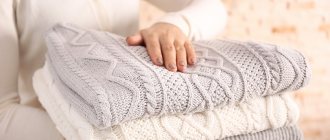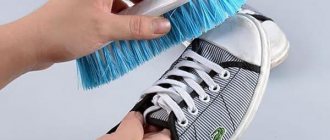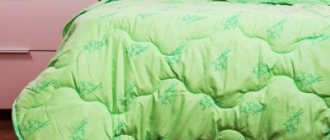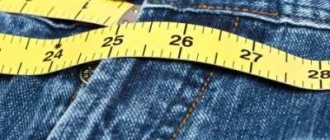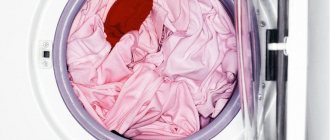A special type of sportswear, without which it is impossible to imagine martial arts training, is a kimono.
This lightweight clothing, made only from natural fabrics, does not restrict movement, is comfortable to wear and resistant to wear.
The secrets of proper washing will help you preserve the original appearance of your clothes longer. We will tell you in the article how to wash a kimono (for judo, karate) in a washing machine and by hand.
Washing secrets
You can wash a kimono either by hand or using a washing machine.
The only thing that, regardless of the choice of washing method, is necessary:
- strictly adhere to the temperature regime (no more than 40C),
- never wash white and colored kimonos together,
- Wring out sportswear as carefully as possible.
Ignoring these simple tips may cause final damage to the product.
In the washing machine
To maintain the shape and density of sportswear, it is necessary to adhere to a clear sequence of machine washing steps:
- Before loading clothes into the washing drum, get rid of stubborn dirt.
- The required temperature is set: for natural fabrics - no more than 35-40C; for sportswear made from mixed fabrics, a temperature of 40-50C is allowed.
- Powder is poured into a special compartment. For white kimonos, use liquid detergent in combination with oxygen bleach. Special powders for colored fabrics are ideal for colored sportswear.
- Set the required washing mode: delicate or synthetic.
- Spin - no more than 500 revolutions (if the kimono is made from mixed fabrics). For natural materials, machine spinning is prohibited (the function is disabled).
- The prepared clothes are carefully folded and loaded into the washing drum (the colored belt is washed separately).
- After washing, sportswear should be immediately taken out and hung to dry.
Hands
Delicate, gentle hand washing will help quickly return the kimono to purity and freshness without compromising the shape and color of the product.
Algorithm of actions:
a basin or bathtub is filled with warm water (temperature no higher than 40C), liquid detergent or powder is added;- a dirty kimono is turned inside out and immersed in a soapy solution for several hours;
- then wash the product with gentle, squeezing movements, paying special attention to the fabric on the collar, cuffs and armpits;
- the washed product is thoroughly rinsed two or three times until the soap solution is completely removed from the fabric;
- The kimono is carefully wrung out and hung out to dry.
Do I need to soak?
If sportswear is very dirty, it should be soaked before the main wash.
The colored kimono is immersed in warm water (room temperature) for one and a half to two hours. To better remove dirt, add a few tablespoons of laundry soap shavings to the water.
White sportswear is soaked for half an hour in a soda solution (2 tablespoons of soda are dissolved in 10 liters of water).
Rules for drying and ironing
To prevent the form from stretching, it must be dried and ironed properly. It is unacceptable to wring out and dry a kimono in a machine, otherwise deformation cannot be avoided. It is better to squeeze the product with your hands gently without twisting too much. It is recommended to dry it in the open air - on a balcony or street; you cannot hang it on a radiator. Some people prefer to take their clothes out into the cold to remove odors. If you follow simple rules, you will be able to avoid damage to the fabric.
The fact is that ironing cotton is extremely difficult even at high temperatures. Products with a woven structure should not be ironed, they just need to be washed and dried properly to prevent wrinkles.
Note! Many people starch kimonos to give the fabric shape and elasticity, but it must be done correctly. In cases where a large amount of starch and a thick solution is used, the product becomes too hard. Washing starch out of fabric will be problematic.
Washing and bleaching a kimono at home is quite simple. To do this, use mild chlorine-free bleaches, powders or liquid products for white laundry. You need to dry the uniform in the fresh air to avoid bad odors. Ironing is usually not required if all steps have been completed correctly.
Source of the article: https://tvjam.ru/stirka/kak-stirat-kimono/
How to wash a kimono: what to do with it after training, how to bleach it, How to wash a kimono until it is white.
How to clean a belt?
An integral part of a martial arts fighter's costume is a belt. Depending on the level of skill, a belt of a certain color is selected.
You should not ignore belt care , since a dirty element of the costume against the backdrop of a snow-white kimono spoils the overall impression of the fighter’s appearance.
The easiest way to wash a white belt is. It is placed in a special net (or pillowcase) and loaded into the drum of the washing machine along with the kimono.
Colored belts are washed according to the following scheme:
Warm water (no more than 40C) is poured into a basin and powder or liquid detergent for colored fabrics is added.- The belt is immersed in a soapy solution and left to soak for ten to fifteen minutes.
- Afterwards, the belt is thoroughly wrinkled, and if necessary, especially contaminated areas are treated with a brush and laundry soap.
- The washed belt is rinsed in clean running water and hung out to dry.
Bleaching the kimono and belt at the same time. This will help avoid a situation where individual parts of one martial arts suit differ in shade.
Material
Karate kimonos are made from different materials, both natural and synthetic. They all have different properties, and the selection of suitable material depends, first of all, on the type of combat.
- Kata. This karate technique includes attacking and defensive movements that are carried out with one or more invisible opponents, shadow boxing. Demonstration fights are held in kata. The best kimono you can choose for kata is made from high-density natural cotton. It will perfectly remove moisture during combat and allow air to pass through. Thick cotton with a tight weave will make a loud bang. And in kata competitions this is an important indicator. The stronger the acoustic effect, the better.
- Kumite. This type of combat, unlike kata, is fought against an opponent and requires high intensity of movements. Several fights may take place during the competition. In order for a fighter to feel comfortable during fights, the kimono must breathe well, remove moisture, and be light. Therefore, kimonos made of mixed fabric and polyester, an ultra breathable and incredibly light material, are suitable for kumite. The better these properties of the fabric, the better the athlete feels.
- Traditional karate. If you need a kimono for traditional karate, then you can consider models made of 100% cotton and models made of mixed fabrics. If you have been practicing traditional karate for several days, the classic heavy cotton kimono will suit you. It is made from fairly dense fabric, so it will serve you for a long time. At the same time, the kimono will be comfortable to wear and comfortable in battle. For beginners, it is best to consider a kimono made from mixed fabrics so that it is fairly lightweight, easy to care for and inexpensive. In such a uniform, daily training will be comfortable and productive.
Kimonos not only made from cotton, but also from mixed fabrics are also suitable for children. Modern kimono fabrics are lightweight and do not cause discomfort. Active young athletes will not feel hot in them. These uniforms are high quality and low priced, so you won't have to worry about your child growing out of them too quickly. In addition, mixed fabric is easier to care for: it shrinks less when washed, dries faster, and irons better.
How to remove various stains?
The recipe for getting rid of it depends on the type of stain itself.
- will help remove sweat stains from colored fabrics It is enough to soak the dirty item in the prepared solution and leave for half an hour. Afterwards the product is washed in the usual way.
- Hydrogen peroxide will help remove blood stains from a white It is enough to moisten the stain generously with peroxide, wait until the reaction occurs, and remove the stain with a cotton sponge.
- Laundry soap will help get rid of grass stains Rub the dirt with soap and leave it alone for ten to fifteen minutes. Afterwards the clothes are washed in the main mode.
- Hydrogen peroxide and ammonia (mix in equal proportions) will help get rid of yellow spots The resulting solution is diluted in water (3-4 spoons per 10 liters), in which the kimono is soaked. After an hour, the clothes are washed as usual.
- If a rust stain appears on a white item after washing , lemon will help remove it. You need to wrap a piece of lemon in gauze and a paper napkin, apply it to the stain and press with a hot iron.
Whitening kimonos at home
Sometimes a black or colored kimono is chosen for daily training, while white is reserved for demonstration performances. However, this practice is rare, so you need to know how to bleach a kimono yourself without damaging the fabric. A few rules for proper cleaning of products:
- do not use products with chlorine, which destroys the structure of the material;
- pre-soak sportswear in warm soapy water or boil;
- manually wash particularly dirty areas using special bleach;
- rinse after washing in the machine with cold water with the addition of 2-3 tablespoons of vinegar or conditioner to get rid of the unpleasant odor;
- Do not brush old or stubborn stains, otherwise the fabric will wear out;
- Before washing, turn the product inside out.
Constant boiling of the mold leads to severe shrinkage and deformation, so it is better to resort to bleaching. You can boil a kimono that has completely changed its shade to gray or yellow. To do this, place white items in a large saucepan or bucket, add water or soap solution (10 liters per 1 kg of clothing), place on medium heat and bring to a boil. You should stir things from time to time, and after boiling, rinse with clean water. The easiest way to remove stains is to rub small stains with laundry soap and leave for 5-10 minutes, then wash as usual.
How to return the color?
You can return the original whiteness and freshness in the following ways:
Lather the fabric with laundry soap and leave the clothes alone for two hours. The product can then be washed as usual.- Deciduous wood ash is an excellent folk remedy for bleaching natural cotton and linen.
The ash is poured into a gauze bag and placed in the drum of the washing machine along with dirty clothes. - A saline solution will help quickly restore the whiteness of a cotton kimono. In 10 liters of oxen, dissolve 2 tablespoons of salt, and place the product in the resulting solution for half an hour. Afterwards, the clothes are washed in the usual way.
- A solution of hydrogen peroxide (2 tbsp), ammonia (1 tbsp) and water (10 l) helps to cope not only with the gray tint of a washed item, but also with old stains. The kimono is immersed in the prepared solution, left for forty minutes, after which it is washed by hand or in a machine.
The basic rule that must be remembered in order to avoid final damage to the product: a kimono that has lost its whiteness cannot be bleached with products containing chlorine. The result of such actions will be an even grayer fabric of the product.
Using store-bought bleaches
In advanced cases, folk remedies may not cope with the task of bleaching textiles; in addition, the required composition may not be at hand.
Therefore, it is important to keep at least one of the industrial stain-fighting products in the house. Popular and effective store-bought laundry solutions:
- special soap for removing local contaminants. It is used by analogy with the household one, but has a more pronounced effect and often helps the first time;
- oxygen products – an innovation inspired by hydrogen peroxide. Applicable to almost all fabrics, even the most delicate ones, and can be used for items with complex prints;
- Chlorine bleaches are only suitable for materials made from natural plant fibers.
In conclusion, it is worth exploring several ready-made solutions that are popular on the market:
- "Antipyatin" - stain-removing soap;
- “Vanish oxy action” – oxygen powder for textiles, carpets and upholstered furniture;
- “BOS” – compositions for soaking linen in the mid-price category with a preventive effect;
- “Minutka” – a budget line of stain remover pastes;
- "Amway" - organic products with absolute safety and effectiveness, presented on the market at the highest price.
How to remove the smell?
A kimono soaked in sweat begins to smell unpleasant. One proven method will help remove the smell of sweat: just soak the clothes in water with vinegar (2 tablespoons of vinegar per 10 liters of water). After soaking, the clothes are thoroughly rinsed and hung out to dry.
The following recommendations will help minimize the appearance of unpleasant odors:
- after each workout, the kimono must be removed from the bag and laid out to dry;
- after each workout, clothes must be rinsed under running, cool water;
- Drying in the cold will help quickly get rid of the unpleasant odor of sweat, even without washing.
Popular cotton fabrics
Batiste: lightness and airiness. How to preserve the beauty and brightness of fabric color?
Taffeta is a fabric for festive events and home interiors. Capricious luxury and spectacular drapery
Is calico a fabric just for bed linen or is it good for something else?
Pima Cotton: The softest type of cotton fabric. One of the most comfortable and delicate materials for the production of expensive luxury products
Poplin is a popular material for bedding and more
Satin lux: natural breathable cotton fabric with the characteristics of silk. One of the best materials for sewing expensive linen
Marquisette is an airy fabric originally from France. Will appeal to lovers of natural materials
How to dry?
It is strictly forbidden to dry a kimono made from natural fabrics in an automatic machine, twist it too much, or stretch it. From such actions, the fabric stretches and loses its shape and original appearance.
Basic drying rules:
Immediately after machine washing, clothes must be removed from the drum and hung out to dry.
Delay can lead to the formation of creases and folds on the fabric, which will be very difficult to get rid of. Also, leaving a damp kimono in the washing machine for a long time can cause a very unpleasant, musty odor to appear, which can only be removed by repeated washing.- Wet clothes are gently shaken and hung out to dry in the open air, in a dark, well-ventilated place.
- It is forbidden to dry a kimono on a radiator or near an open fire.
Sportswear made from natural fabrics takes a long time to dry, so you should be patient and have a second set of replacement uniforms for training.
What kind of fabric is cloth and what is it used to sew?
Thick woolen or half-woolen fabric - cloth is made from fleecy yarn. The material is obtained by felting, transforming it into a compacted fabric with a felt-like coating (it covers the texture of the weave of the threads).
Clothes made of cloth
Based on the density of wool fibers, cloth is usually divided into the following categories:
- thin - made from loose, soft threads;
- semi-rough - made from semi-soft fibers;
- coarse - made from the fur of coarse-wool sheep.
The finishing method makes it possible to distinguish cloth material:
- brushed - it is distinguished by cut pile with fleece. Matter is endowed with brilliance and deep color;
- not lint-free (lint-free) – it is distinguished by its matte tonality.
Clothes such as military uniforms, coats, suits are mainly made from thick cloth; headdresses, such as hats, are also made. Fabric with the addition of synthetics, viscose, and cotton components is used for sewing workwear, sports and school suits,
Adviсe
Recommendations for caring for the product are as follows:
- It is strictly forbidden to wash kimonos in hot water. When exposed to high temperatures, the product may shrink in size.
- Adding conditioner to the water during rinsing will help make the fabric soft and pleasant to the touch.
- Do not soak a kimono in hot water. Under the influence of high temperatures, dirt is further absorbed into the fibers of the fabric, and sportswear takes on a gray tint and a washed-out appearance.
- Regardless of the composition of the fabric, automatic drying for kimonos is not acceptable.
You will find maximum useful information about washing clothes and various fabric products here.
Dry and iron properly
Kimonos are usually not ironed. After washing, carefully remove the water from it and hang it on hangers in the room or outdoors. If, after drying, a wrinkle is found on the form, it is moistened, the fabric is straightened and waited for drying. Sportswear should not be dried:
- on the radiator, as it will shrink from high temperature and may become covered with yellow spots;
- under direct sunlight (colored clothing will fade and white clothing will turn yellow).
As you can see, with regular care, compliance with temperature conditions and a reasonable choice of cleaning products, a kimono can be kept in excellent condition for a long time.
Source of the article: https://hozotsek.ru/tekstil/stirka/kimono.html

